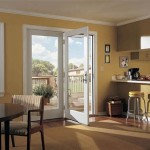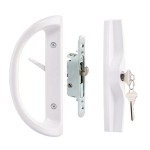Patio Design Models for Homes: A Comprehensive Guide
The patio, an extension of the interior living space into the outdoors, increases a home's value and enhances the quality of life for its inhabitants. The creation of a functional and aesthetically pleasing patio necessitates careful planning, factoring in considerations such as spatial constraints, desired ambiance, material selection, and the integration of landscaping elements. This article explores various models of patio design, providing a framework for homeowners and designers to create outdoor spaces tailored to their specific needs and preferences.
Patio design extends beyond mere aesthetics; it requires a strategic understanding of spatial dynamics, material properties, climate considerations, and the homeowner's lifestyle. A successful patio design seamlessly integrates with the existing architecture and landscape, creating a cohesive and inviting outdoor environment. Functionality is equally important, ensuring the patio accommodates intended activities such as dining, lounging, entertaining, or gardening. This requires careful consideration of furniture placement, traffic flow, shade provision, and privacy.
Key Point 1: Defining Patio Style and Functionality
Before embarking on a patio design project, defining the intended style and functionality is paramount. This initial step guides all subsequent decisions, from material selection to landscaping choices. Identifying the primary uses of the patio – whether it be for dining, relaxation, entertaining, or a combination thereof – informs the layout and the incorporation of specific features.
Selecting a style is crucial for aesthetic coherence. Common patio styles include:
- Modern: Characterized by clean lines, geometric shapes, and minimalist features. Materials often include concrete, steel, and glass.
- Rustic: Emphasizing natural materials such as wood, stone, and brick, creating a warm and inviting atmosphere. This style often incorporates vintage or repurposed elements.
- Mediterranean: Drawing inspiration from the coastal regions of the Mediterranean, this style features warm colors, terracotta tiles, stucco walls, and lush vegetation.
- Coastal: Evoking a beachside atmosphere with light colors, natural textures, and nautical accents. Elements such as driftwood, seashells, and rope are often incorporated.
- Traditional: Featuring classic designs, symmetrical layouts, and formal landscaping. Brick or stone paving, wrought iron furniture, and manicured gardens are common elements.
Functionality considerations include:
- Dining Area: Dedicated space for outdoor meals, requiring ample seating and a suitable table. Proximity to the kitchen is often desirable.
- Lounge Area: Comfortable seating arrangements for relaxation and conversation. Considerations include weather protection through shade structures and windbreaks.
- Entertaining Space: Larger area designed for hosting gatherings, potentially including an outdoor kitchen, bar, and entertainment system.
- Gardening Area: Dedicated space for planting flowers, herbs, or vegetables. Raised beds, containers, and vertical gardening systems can be incorporated.
Identifying both the style and functionality early in the design process ensures a cohesive and practical patio space aligns with the homeowner's needs and preferences.
Key Point 2: Materials and Hardscaping Elements
The selection of materials and hardscaping elements significantly impacts the patio's aesthetics, durability, and maintenance requirements. Careful consideration should be given to factors such as climate, budget, and the overall design style.
Common patio paving materials include:
- Concrete: Versatile and durable, concrete can be poured in place or used in the form of pavers. It can be stained, stamped, or textured to achieve various aesthetic effects.
- Brick: Classic and timeless, brick offers warmth and texture. It is durable and relatively low-maintenance.
- Stone: Natural stone, such as flagstone, slate, or limestone, provides a unique and organic look. However, it can be more expensive and require more maintenance.
- Tile: Ceramic or porcelain tile offers a wide range of colors, patterns, and textures. It is durable and easy to clean but can be slippery when wet.
- Gravel: A cost-effective and permeable option, gravel can create a rustic and informal look. It requires regular maintenance to prevent weed growth.
- Wood: Wood decking can provide a warm and inviting surface. It requires regular sealing and staining to prevent rot and decay. Composite decking provides a low-maintenance alternative.
Hardscaping elements, beyond paving, contribute significantly to the patio's functionality and aesthetic appeal:
- Walls and Fences: Provide privacy, wind protection, and visual definition. Materials can include brick, stone, wood, or concrete.
- Pergolas and Arbors: Offer shade and create a sense of enclosure. They can be covered with climbing plants for added beauty and functionality.
- Fire Pits and Fireplaces: Create a focal point and provide warmth for outdoor enjoyment during cooler months.
- Water Features: Add tranquility and visual interest. Options include fountains, ponds, and waterfalls.
- Outdoor Kitchens: Enhance the patio's functionality for entertaining. They can include grills, countertops, sinks, and refrigerators.
The judicious selection and integration of materials and hardscaping elements are critical for creating a durable, aesthetically pleasing, and functional patio space.
Key Point 3: Landscaping and Softscaping Integration
Landscaping and softscaping elements are essential components of patio design, softening hard surfaces, adding color and texture, and creating a harmonious connection with the surrounding environment. Strategic plant selection and placement can enhance privacy, provide shade, and attract wildlife.
Key considerations for landscaping integration include:
- Plant Selection: Choose plants that are well-suited to the local climate, soil conditions, and sunlight exposure. Consider factors such as size, growth rate, and maintenance requirements. Native plants are often a good choice as they are adapted to the local environment and require less water and fertilizer.
- Spatial Arrangement: Arrange plants to create visual interest, provide shade, and enhance privacy. Consider layering plants of different heights and textures. Use vertical gardening techniques to maximize space in smaller patios.
- Color Palette: Select plants with flowers and foliage that complement the overall color scheme of the patio and the surrounding landscape. Consider using a mix of annuals and perennials for seasonal color.
- Container Gardening: Use containers to add flexibility and portability to the patio's landscaping. Containers can be used to grow flowers, herbs, vegetables, or small trees.
- Turf Alternatives: Consider using turf alternatives, such as ground cover plants or gravel, in areas where grass is difficult to maintain.
Specific landscaping elements to consider include:
- Trees: Provide shade and create a sense of enclosure. Choose trees that are appropriate for the patio's size and location.
- Shrubs: Add structure and privacy to the patio. Choose shrubs that are easy to maintain and that provide year-round interest.
- Flowers: Add color and beauty to the patio. Choose flowers that bloom throughout the season.
- Herbs: Add fragrance and flavor to the patio. Choose herbs that are easy to grow in containers or raised beds.
- Vines: Can be used to cover walls, fences, or pergolas, adding vertical interest and providing shade.
Proper integration of landscaping and softscaping elements transforms a patio from a mere paved area into a vibrant and inviting outdoor living space, enhancing its aesthetic appeal and ecological value.
The design and construction of a patio encompasses diverse elements beyond the core components discussed. Consideration of lighting, drainage, accessibility, and adherence to local building codes are equally important. Outdoor lighting enhances the patio's usability during evening hours, creating ambiance and improving safety. Proper drainage prevents water accumulation, protecting the patio's structural integrity and preventing mosquito breeding. Ensuring accessibility, particularly for individuals with mobility limitations, promotes inclusivity and usability. Compliance with local building codes ensures the patio's safety and legality.
The integration of technology also plays a role in modern patio design. Automated lighting systems, outdoor audio-visual equipment, and smart irrigation systems enhance convenience and efficiency. Incorporating these technologies requires careful planning and integration with the overall design aesthetic. Furthermore, sustainable design principles, such as using recycled materials, incorporating rainwater harvesting systems, and selecting drought-tolerant plants, promote environmental responsibility.
The process of constructing a patio, irrespective of the design model chosen, should involve careful planning and execution. This includes site preparation, proper grading for drainage, and meticulous installation of paving materials and hardscaping elements. Engaging qualified contractors and landscape professionals ensures the project is completed to a high standard, minimizing the risk of future problems. Regular maintenance is crucial for preserving the patio's beauty and functionality over time. This includes cleaning the paving surface, pruning plants, and repairing any damaged elements.
Effective patio design optimizes the use of outdoor space, creating a functional and aesthetically pleasing extension of the home. By carefully considering the style, functionality, materials, and landscaping elements, homeowners and designers can create patios that enhance their quality of life and add value to their property. The selection of the appropriate design model depends on the specific needs and preferences of the homeowner, as well as the characteristics of the site and the surrounding environment.

300 Diseño De Jardines Casas Patios Modernos Hermosos Pequeños Decorados Youtube

Jardines De Casas Youtube

900 Ideas De Patios Y Jardines Patio Jardin Decoración Unas

Programa Para Diseño De Patios Exteriores Y Interiores Planner 5d

500 Diseño De Jardines Casas Patios Modernos Hermosos Pequeños Decorados

280 Ideas De Patios O Galerías Internas Una Casa Decoración Unas Casas

Las Mejores 38 Ideas De Casas Con Patio Interior Diseños

25 Casas De Diseño Con Jardines Espectaculares

10 Casas De Diseño Con Patio Interior Que Te Encantarán Estudio Romanelli

61 Ideas De Casas Parte Trasera Diseños Exteriores
See Also








